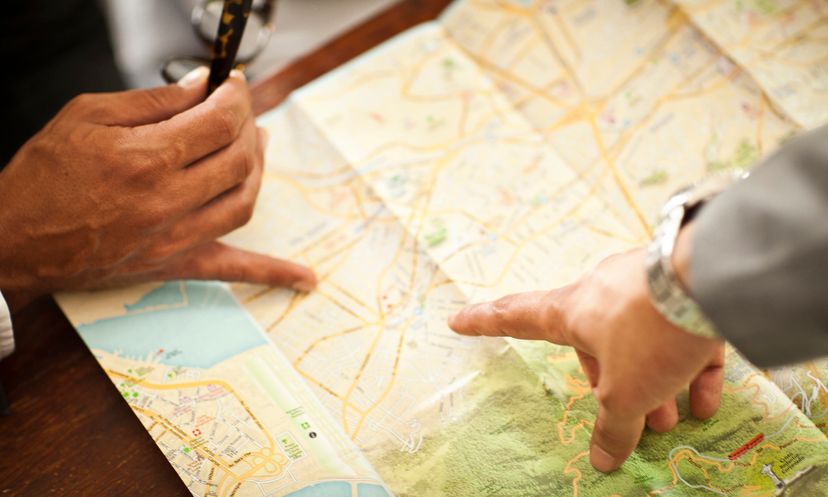
About This Quiz
Topographic maps show the landscape in detail. They show the land's contours, elevations, mountains, valleys, bodies of water, vegetation and more. Knowing how to use a topographic map can make cross-country hiking navigation a cinch. Take this quiz to learn more about topographic maps.Unlike regular maps, topographic maps show three-dimensional landscape on a two-dimensional surface, using measurements such as contours and elevation to indicate the features of the terrain. A regular will just show where various places are, along with any existing boundaries.
The first topographic map was made in 1879 by the U.S. Geological Survey (USGS).
Developments in aerial photography, followed by satellite photography, made it easy to take photos of the landscape in extensive detail.
Advertisement
Topographic maps do not show the depth of the water table inside the Earth. Topographic maps normally show various bodies of water bodies, vegetation types, relief features such as hills (and their height), as well as structures created by man.
While not used in athletics, they are used in a wide variety of fields, including engineering, conservation, environmental management, public works design and urban planning, as well as outdoor activities like fishing, hiking or camping.
Green symbols on a topographic map denote vegetation.
Advertisement
Blue symbols on a topographic map denote water resources such as rivers, wells, etc..
Grey or red symbols on a topographic map denote densely built-up areas.
Houses are shown as small black squares on topographic maps.
Advertisement
Contour lines are the most common feature found on a topographic map. Basically, these are lines connecting points of equal elevation (height) on the map.
Besides connecting all points of same elevation, contour maps also show the shape of the landscape.
They are known as contour intervals. Different topographic maps use different contour intervals, depending on the topography.
Advertisement
Darker contour lines are known as index contour. Every fifth contour line is an index contour. It helps make the map less dense, and easier to understand.
If the contours are close together on a topographic map, you're looking at a steep slope.
Thin contour lines do not denote a flat terrain. On the other hand, if the contour lines have wide spaces in between, or don't exist at all, this denotes a relatively flat terrain.
Advertisement
The first number of scale is always one. For example, a scale of 1:48,000 means that one inch on the map is equal to 48,000 inches.
1:24,000 is the scale most often used on U.S. topographic maps, which are produced by the U.S. Geological Survey (USGS). A 1:24,000 map is large and provides a lot of detail about the area. It shows all the man-made structures on the terrain: buildings, footbridges, private roads, etc.
According to the USGS, it requires around 57,000 maps at 1;24,000 scale to cover them all.
Advertisement
Town planners and engineers normally use maps with a scale of 1:600. This is because they have to plan all types of small structures on a dense grid. They need better land clarity.